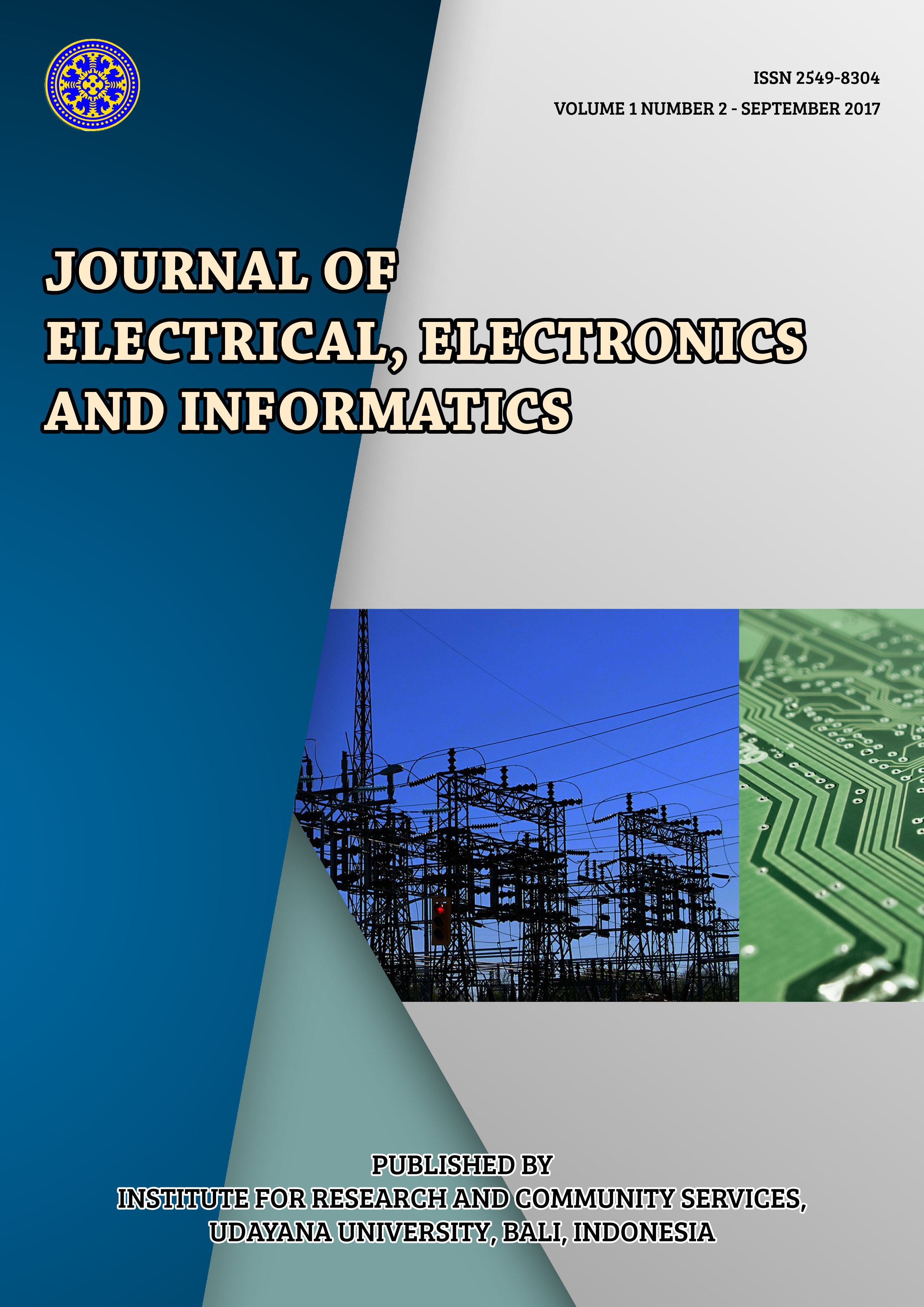Performance Evaluation of CDMA - MIMO (STBC) System over Rayleigh Fading Channel for Image Transmission
Abstract
Data transmission via wireless communication system is not only in text form but it also can be in image form. In the process of sending data or information, it often experiences interference in transmission media, which is fading. The method used in this research is by simulation using MATLAB. The simulation of CDMA-MIMO (STBC) system with Walsh spreading code is expected to reduce the disturbance of fading. Fading channels can be modeled using Rayleigh distribution. The number of users and spreading factors affect the performance of CDMA-MIMO (STBC) systems. The parameters used in this simulation were SNR, BER, and PSNR. The results showed that image reconstruction passing CDMAMIMO system with spreading factor 4 has better image quality. Its PSNR 33.9589dB when SNR -10dB. SNR was increased 10 dB then PSNR 60.00 dB. The increasing of spreading factor to 8 and 16 was obtained by increasing PSNR, PSNR 35.0685 dB and PSNR 37.5665 dB, respectively. For 4 users with Spreading Factor 4 and SNR 0 to 5 dB, it was changed the BER. This is influenced by changes in SNR. The higher SNR value, the average value of BER will be smaller. A growing number of users from 1 to 4 users were decreased the performance of the MIMO CDMA system when observed from the BER and PSNR.











